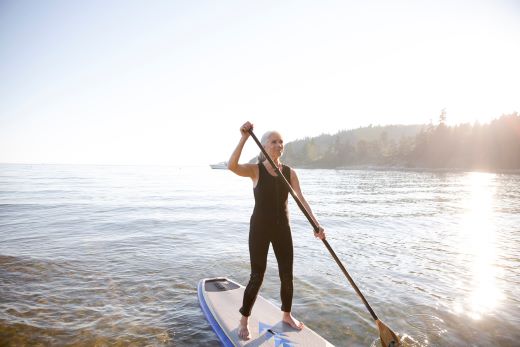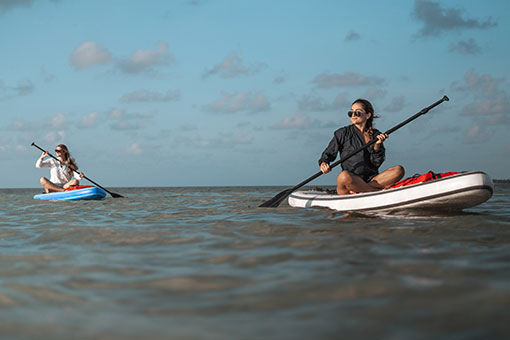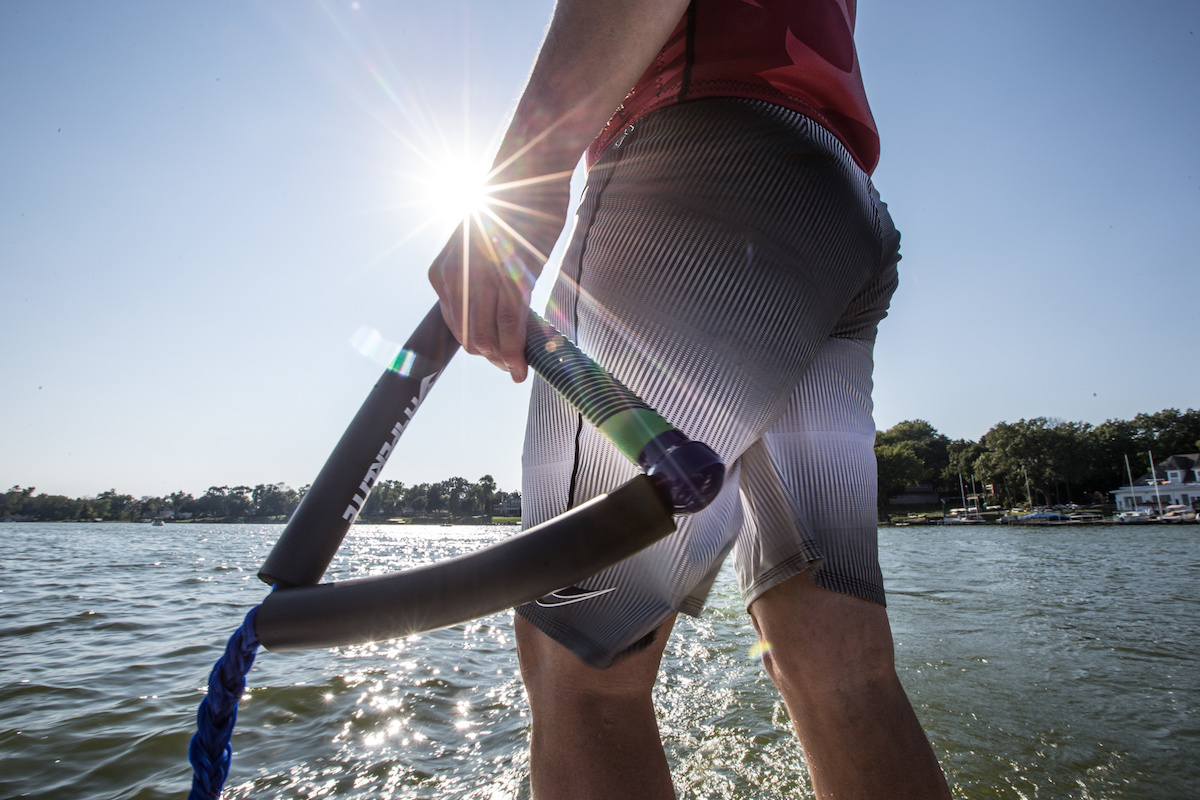Have you ever tried stand-up paddleboarding (SUP)? If so, you know that SUP boards offer an exciting experience for watersports enthusiasts of all ages. However, there are some important paddleboard safety tips to keep in mind while you’re out on the water.
10 Paddleboard Tips to Keep in Mind
Whether you’re a first-timer or a seasoned pro, these paddleboard tips will keep you safe on the water:
1. Check Your Equipment
While this probably goes without saying, you’ll want to ensure your equipment is in good condition before getting on the water. We recommend checking it both at home and your paddleboard location.
If using an inflatable board, ensure it’s pumped to the recommended PSI. Additionally, make sure your paddle is put together properly, and your equipment is suitable for the conditions.
2. Check Yourself
In addition to checking your equipment, you must ensure you’re dressed appropriately for the weather and water temperature. Wear a wet suit underneath your clothes if the water is cold. Essentially, you want to dress as if you were going to fall in.
3. Wear a Leash
If you accidentally fall in, a leash prevents you from drifting away from your board. Use an ankle leash for surf or non-flowing water and a quick-release waist belt leash for flowing water or tidal waterways.
4. Wear a Life Jacket
When on the water, you should always wear a life jacket or personal floatation device (PFD). If you get separated from your board for whatever reason, your life jacket is your lifeline.
Next Read: Life Jackets, Vests & PFDS
5. Bring a Phone
Before embarking on your journey, let someone (reliable) know where you’re headed and what time you plan on returning. Arrange to call at a certain time to let them know you’re not aimlessly drifting off and away.
If an emergency arises, dial 999 and ask for the Coast Guard. Additionally, consider downloading an app to help pinpoint your location if you need assistance.
6. Check the Forecast
Every paddleboarder should familiarize themselves with various wind and tide conditions. In addition, check the local weather forecast so you know what the conditions will look like when you arrive and throughout the day.
If you’re paddling on a river, heavy rainfall happening upstream can cause sudden surges in river levels. And fast-moving water carries extreme risk, as surging waves, eddies, and currents require advanced training to navigate.
Similarly, even a slight wind makes paddling difficult if you’re paddling on a lake or the ocean. It also increases the risk of capsizing – so be prepared.
Next Read: Weather Safety Tips for Boaters
7. Have Local Knowledge
Every paddleboarder should be somewhat familiar with the water they’re paddling through. And usually, that means talking to local paddleboarders, surfers, kayakers, and sailors beforehand. They can tell you about the tidal movement, wind direction, and potentially hidden dangers.
8. Bring a Friend
Not only is paddling with a friend good safety practice, but it’s also more fun! Recruit a handful of water-loving adventure junkies or join a local paddle group.
9. Know Which Way the Wind is Blowing
Knowing where the wind is blowing (and how it will blow later) is incredibly important when planning your paddle excursion.
Whenever possible, start paddling into the wind. This ensures that your return is easier than your departure, which is ideal when feeling fatigued. Additionally, be wary of offshore winds, as they can be more powerful than expected.
Pro Tip: Never paddle out further than your ability to return. (Especially if the current and/or winds are strong.) Underestimating Mother Nature poses serious risks.
10. Take a SUP Course
One of the best ways to feel confident and capable out on the water is to take a SUP course. For a hands-on learning experience, we recommend going through a local watersport organization. Check out the American Canoe’s website for available classes near you. However, you could always take a course online.
What To Avoid
As long as you follow these paddling safety tips, your experience on the water will be great. But if you need further reminding, here are some things to avoid when paddleboarding:
Bad weather: Don’t paddle in weather conditions that you aren’t completely comfortable navigating.
Paddling out further than you can return: Don’t paddle for miles in the direction of the current only to discover that you don’t have the strength or endurance to return.
Bringing the wrong equipment: Make sure to have a properly fitting life jacket and dress for the temperature of the water. That means bringing a wetsuit if necessary.
Not knowing how to swim: Every paddleboarder should anticipate falling into the water. Therefore, it’s crucial that you know how to swim first.



